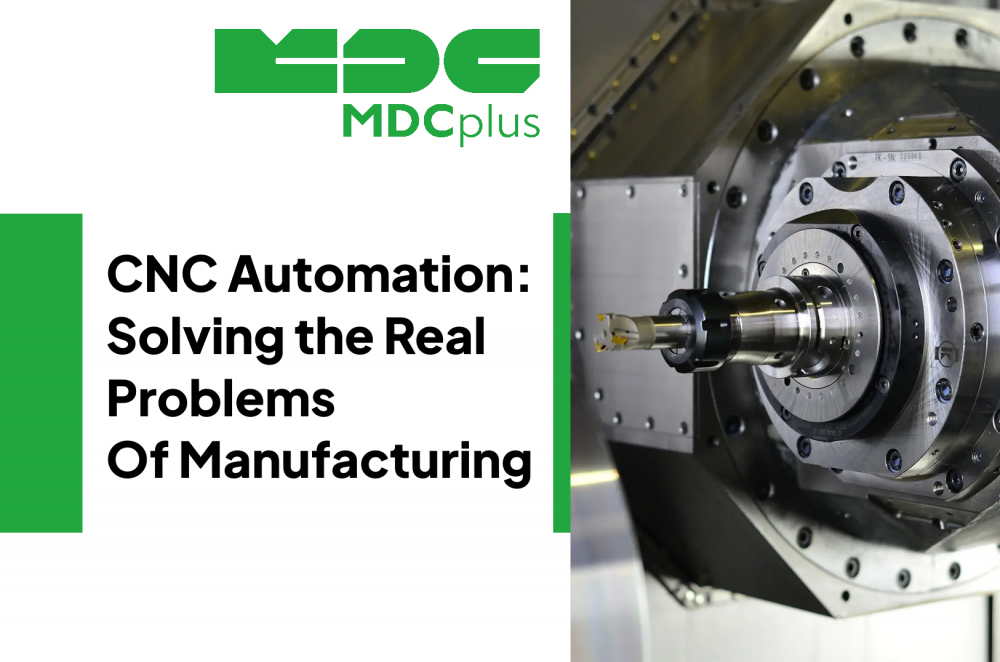CNC Automation: Solving the Real Problems No One Likes to Talk About
Downtime Is Your Biggest Leak
Every hour a machine isn't cutting is lost revenue. Yet shops continue to tolerate dead time during inspections, job switches, or program uploads. A prototype run can paralyze a machine for half a shift while someone upstream decides if it's "approved." Waiting on inspection, tweaking offsets, or prepping a new batch are all quiet killers of productivity. This is downtime nobody tracks — but it’s always there.
High-Mix, Low-Volume Isn’t the Exception Anymore
Manufacturing has shifted. Most job shops now operate in high-mix, low-volume environments. Customers want small batches, quick turnarounds, and endless revisions. Every new setup becomes a liability. It means new tooling, new fixturing, new programs. And while the orders keep shrinking, the complexity never does. Without serious process control, that environment turns chaotic fast.
The Disconnect Between Prototyping and Production
One of the most overlooked problems is the separation between prototyping and full-scale production. Many manufacturers are forced to run prototypes on different machines or even in different departments. This results in double the programming effort, separate setups, and often subtle mismatches between prototype and final part. It’s wasteful and introduces risk. If you're going to prototype something, do it on the same machine you're going to use for the real job — or be ready for problems when you scale.
Setup Time Destroys Lead Time
Manufacturers love to brag about their cutting speeds, but the real delays come from non-cutting operations. Changing a fixture. Loading tools. Rerunning an offset check. These things eat hours and offer zero return. Customers don’t care how fast your spindle moves if you spend four hours preparing for five minutes of cutting. Reducing setup time isn’t an optimization — it’s the only way to stay competitive.
Running One Shift Is Playing Small
Lights-out machining — running machines unattended at night — is one of the few ways to dramatically improve throughput without hiring more people. But to do this safely, you need consistency, reliability, and flexibility baked into your process. Most shops don’t get this far. They lack the pallet capacity or process integration to feed machines through the night. The potential is there, but the execution is missing.
The Real Solutions Start With Strategy, Not Spending
Adding automation doesn’t mean throwing money at more hardware. The smartest shops start by standardizing their tools and workholding. Create a core tooling suite for your key parts. Standardize billets. Use modular fixtures. Build your operations around reusability and minimal changeover.
From there, the transition to lights-out becomes possible. With the right job nesting, tool management, and part handling, even a modest machine setup can run unattended. But it requires planning, not just procurement.
Five-Axis Isn’t Exotic Anymore
People still treat five-axis machining like it’s reserved for aerospace and turbine blades. That’s outdated. Today, five-axis is a workhorse for multi-side machining, indexing, and job consolidation. It reduces setups, slashes cycle times, and frees up your machine for the next job. It's less about cutting complexity and more about eliminating waste.
Repeatability Is the Foundation of Trust
At the end of the day, no automation strategy works if your machines drift out of spec. Long-term precision is what separates production-ready cells from academic case studies. If a job ran perfectly six months ago, you need to know it'll do the same tomorrow — no excuses, no reprogramming, no fiddling. Repeatability isn’t flashy, but it’s what makes real automation possible.
Automate or Fall Behind
If you're a CNC shop running the same way you did ten years ago, you're already behind. Automation isn’t optional — it’s your only shot at scaling without drowning in labor, delay, and setup chaos. The companies who win aren’t necessarily the ones with the biggest machines or the fastest spindles. They’re the ones who have eliminated friction from their process.
They plan smarter, not just harder. And they let their machines run while everyone else is sleeping.
About MDCplus
Our key features are real-time machine monitoring for swift issue resolution, power consumption tracking to promote sustainability, computerized maintenance management to reduce downtime, and vibration diagnostics for predictive maintenance. MDCplus's solutions are tailored for diverse industries, including aerospace, automotive, precision machining, and heavy industry. By delivering actionable insights and fostering seamless integration, we empower manufacturers to boost Overall Equipment Effectiveness (OEE), reduce operational costs, and achieve sustainable growth along with future planning.
Ready to increase your OEE, get clearer vision of your shop floor, and predict sustainably?
